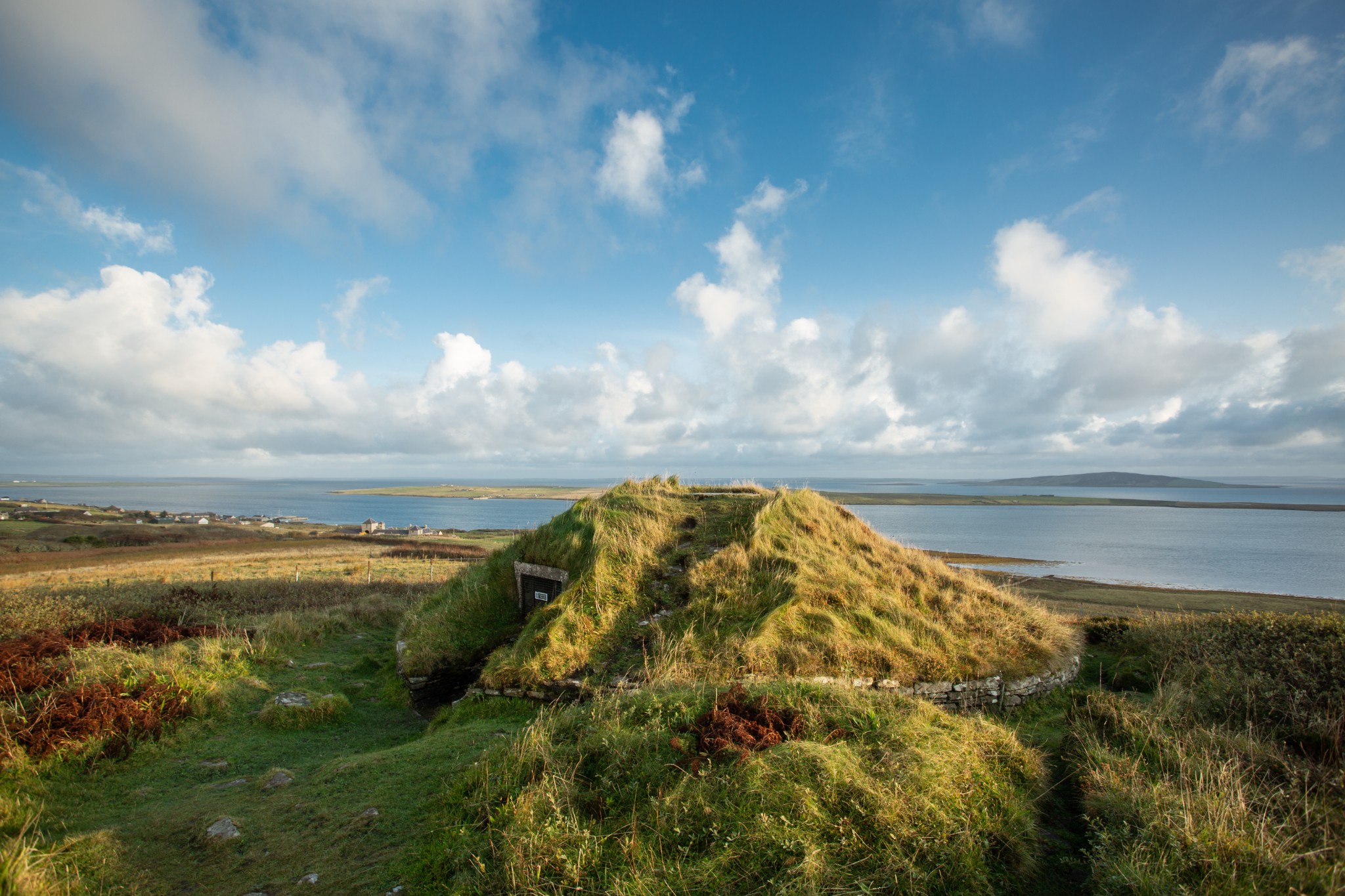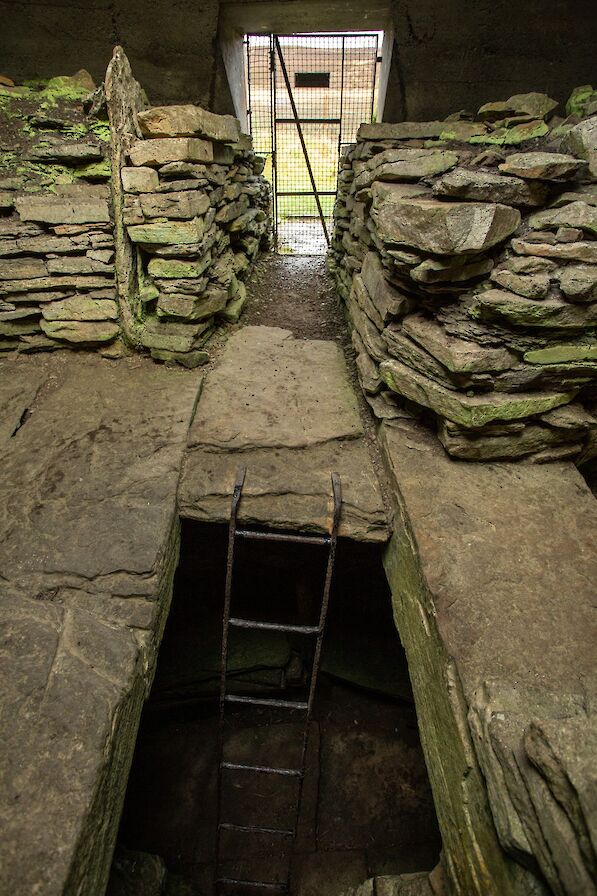If delving in and out of 5,000-year-old tombs is your idea of fun then look no further than Rousay. Even in Orkney, world-renowned for its Neolithic remains, the sheer density of archaeology across this island is quite staggering.
This is a place where you really can get up close and personal with the past.
Rousay is one of the most accessible of Orkney’s inhabited islands, less than half an hour on the ferry from the Mainland harbour of Tingwall. At its heart is a wild area of low, heather-clad hills. Rocky terraces tell the story of the island’s geological past.
The human story of Rousay though has tended to be focused around the more fertile fringes. An almost perfectly circular single-track road snakes its way thirteen miles around the island, linking one township with the next. It’s along the southwesterly stretch of this road, overlooking the strong tides of Eynhallow Sound, that you’ll find an extraordinary series of archaeological remains. This is a landscape of ancient tombs, and our Neolithic ancestors insisted that their revered dead be given a view to, well, literally ‘die for’.
Coming off the ferry, head south to circumnavigate the island in a sun-wise direction (our ancestors would have surely insisted on this). First stop is Taversoe Tuick. Discovered in the late 19th century by the controversial laird of the Trumland Estate, General Burroughs, the Tuick is a fabulous two-storey chambered cairn dating from around 3000BC. While the two chambers were originally entered by separate passageways, today a small, metal ladder allows you to descend from the light and ‘comparatively’ spacious upper chamber to the fascinating lower level – made up of separate compartments and stone benches where Neolithic human remains were carefully placed.
Next stop is Blackhammer. This stalled cairn lies a short distance from the road and is entered by means of a heavy, sliding metal door. Step down a three-rung metal ladder and into a 13 metre chamber divided by upright flagstones into seven compartments. Animal bones and pottery were discovered here, alongside human remains, when the site was excavated in the mid-1930s.
If there was a prize for the best viewpoint from an Orkney burial cairn then the Knowe of Yarso would be a pretty strong contender (and that’s against some seriously stiff competition!) Reaching this eyrie requires a bit more of a leg stretch. Good footwear is required for a stiff uphill walk of just over a kilometre (watch your footing, particularly on the way back down). The remains of at least 29 people were discovered here during excavations in the 1930s, alongside the bones of some 36 red deer.
Continue along the road as it curves its way west then northwest. As it rises the views open up across the island of Eynhallow – Orkney’s ‘Holy Island’ – and across to the impressive Costa Head on the West Mainland.
Just before the road veers to the right and heads northeast you’ll find a small carpark and signposts to Midhowe Cairn and Midhowe Broch. A series of kissing gates lead you, steeply at first, across two fields to a chambered cairn of truly impressive scale. A massive hanger was built over Midhowe Cairn following excavations in the 1930s. Steel latticework supports a series of raised walkways, allowing visitors to peer down into the 23-metre long chamber. It’s a suitably epic end to your tomb-raiding tour of Rousay.
But of course, you’re not finished yet. Even if your interest stops with the end of the Neolithic you can’t come this far and not visit the nearby Midhowe Broch (a quick glance at the steep rise back up to the road might also help persuade you to stay a while longer!) The broch is thought to have been built sometime between 200BC and 200AD, and alongside its near neighbour of Gurness, across the water on the Orkney Mainland, it’s one of the most impressive to be found in our islands. Roman artefacts discovered on the site suggest a people well connected with the great trading routes of their time.
Also worth a visit is Skaill Farmstead, where the remains of a great Norse hall were recently discovered. These earlier finds have now been covered over, but hopefully future excavations will reveal more about this fascinating part of Orkney.
You could easily visit these sites in a single day trip, but Rousay definitely deserves a longer stay.
Walk the rugged west coast or Faraclett Head, or use it as a base for day trips to the neighbouring islands of Egilsay and Wyre – home to St Magnus Kirk and Cubbie Roo’s Castle respectively. You could explore inland, walking amongst the shallow cauldron of hills, and during the summer you can often visit excavations at Skaill and Swandro.
Bikes can be hired locally, and provide the perfect means to get around this compact island. You can find out more about what’s on offer locally through the island’s own fantastic website, and plan your trip with Orkney Ferries.
Obviously Neolithic builders weren’t big on health and safety standards, so do take care when exploring any of our ancient structures, and be mindful of how easy it is to damage both them, or yourselves. Sturdy footwear is strongly advised, and you may well want to consider carrying a torch with you, as natural daylight inside the tombs can be limited, particularly on a dull day.
The Digital Orkney project has been part financed by the Scottish Government and the European Community Orkney LEADER 2014-2020









